|

The term "Saving The Earth" is a misnomer.. The Earth will be just fine...It
will adapt...just without all the people...
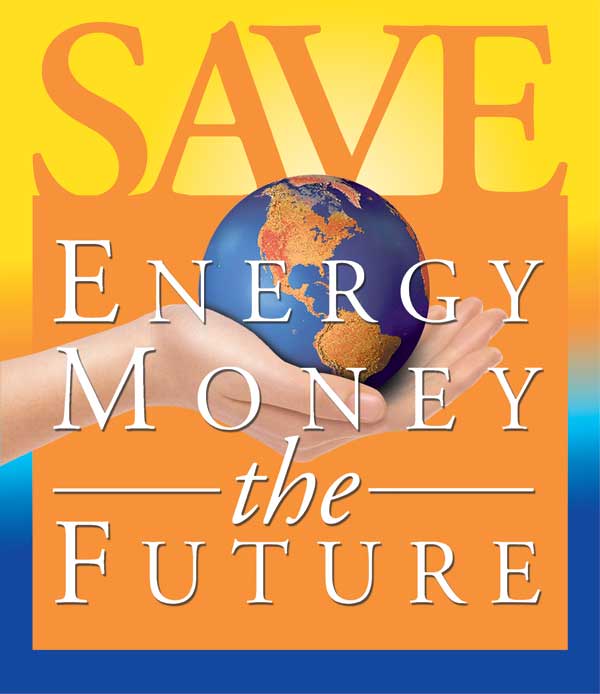
 REDUCE,
REUSE AND RECYCLE-
Look for and Buy Environmentally Friendly Products. Look for things like:
"paper from paper", "100% recycled", "made without ozone depleting
chemicals", and "made from post-consumer recycled materials". Be aware of
the environmental impact your purchases will have. As more consumers begin
to demand environmentally sensitive goods, it will become profitable for
industries to manufacture environmentally friendly products. Buy products
that will last; choose products that come in packaging that can be easily
recycled in your community. Reducing waste does not mean you have to
reduce what you buy, it means shopping with the environment in mind.
Consider the environmental impact of each product before you buy it. Make
a list of what you need before you go shopping; this will reduce impulse
buying. Buy in bulk. It is cheaper and eliminates small containers and
excess packaging, which accounts for 50 percent of our domestic trash. Use
concentrated, multi-purpose products (like laundry soap with non-chlorine
bleach), products sold in bulk. Learning to reuse is easy and after a
little practice, it will become second nature. Before throwing anything
away, think about how each item can be reused. Be sure to use both sides
of a piece of paper before recycling it. REDUCE,
REUSE AND RECYCLE-
Look for and Buy Environmentally Friendly Products. Look for things like:
"paper from paper", "100% recycled", "made without ozone depleting
chemicals", and "made from post-consumer recycled materials". Be aware of
the environmental impact your purchases will have. As more consumers begin
to demand environmentally sensitive goods, it will become profitable for
industries to manufacture environmentally friendly products. Buy products
that will last; choose products that come in packaging that can be easily
recycled in your community. Reducing waste does not mean you have to
reduce what you buy, it means shopping with the environment in mind.
Consider the environmental impact of each product before you buy it. Make
a list of what you need before you go shopping; this will reduce impulse
buying. Buy in bulk. It is cheaper and eliminates small containers and
excess packaging, which accounts for 50 percent of our domestic trash. Use
concentrated, multi-purpose products (like laundry soap with non-chlorine
bleach), products sold in bulk. Learning to reuse is easy and after a
little practice, it will become second nature. Before throwing anything
away, think about how each item can be reused. Be sure to use both sides
of a piece of paper before recycling it.
Recycling means collecting,
processing, marketing, and ultimately using materials that were once discarded.
Many different materials can be recycled. Among these are aluminum cans, glass
bottles and jars, plastics, tin cans, steel cans, brass, copper, car batteries,
computer paper, office paper, corrugated cardboard, motor oil, scrap iron and
steel, and tires.
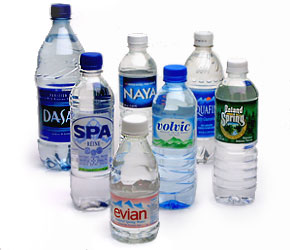
Roughly 50 billion plastic water bottles end up in U.S. landfills each year —
140 million every day! That’s enough, laid end to end, to reach China and back
each day. In 2008, Americans drank an average 215 bottles of water each for a
total of 66 billion bottles. Of that total, only 22% was recycled. We are
shipping 1 billion water bottles a week around the U.S. in ships, trains, and
trucks.
The problem with
plastics:
- Plastic pollution is a
world-wide problem. There is a growing "garbage patch" of plastic
estimated to be more than twice the size of Texas floating in the North
Pacific Ocean.
- Ecosystems and wildlife
are negatively impacted by plastic debris.
- Disposable plastic water
bottles are made out of oil which is a finite natural resource. Plastic
bottles require energy to make and transport. Currently, the amount of
oil we use to produce water bottles each year (17 million barrels) could
fuel over 1,000,000 cars for an entire year.
Buy a refillable bottle and fill it with tap water instead!
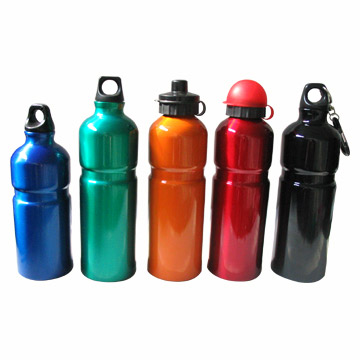
 Recycle Recycle
 Use
reusable containers to store food in your refrigerator instead of
aluminum foil or plastic wrap. Use
reusable containers to store food in your refrigerator instead of
aluminum foil or plastic wrap.
 Keep
rags in your kitchen to wipe spills instead of paper towels. Keep
rags in your kitchen to wipe spills instead of paper towels.
 Take
your own bag when shopping, don't use the plastic or paper one from
the shop, every year 3 billion bags are given away by supermarkets,
that's enough plastic to make a carrier bag big enough to hold the
moon twice over! Take
your own bag when shopping, don't use the plastic or paper one from
the shop, every year 3 billion bags are given away by supermarkets,
that's enough plastic to make a carrier bag big enough to hold the
moon twice over!

 SAVE
ENERGY- If each U.S. household
increased the energy efficiency of our major appliances by 10 to 30%, we'd
reduce the demand for electricity by the equivalent of 25 large power plants. SAVE
ENERGY- If each U.S. household
increased the energy efficiency of our major appliances by 10 to 30%, we'd
reduce the demand for electricity by the equivalent of 25 large power plants.
Energy use in the home is
responsible for 30 per cent of energy related carbon dioxide (C02) emissions
which is a primary contributor to global warming.
-
Americans buy 2.2 million light bulbs every day. We flick a light
switch dozens of times a day without thinking, but it's time to give
it some thought. According to the World Resources Institute,
lighting accounts for about 20 percent of all the electricity used
in the United States (5 percent residential, 15 percent commercial),
and 10 percent of all the emissions of CO2, the main greenhouse gas.
-
Turn off lights when you are not in the room
-
Replace incandescent light bulbs with compact fluorescents. The
standard incandescent bulbs currently lighting your home have
changed very little from Thomas Edison's first light bulb in 1879.
Only 10% of the energy used by these standard bulbs contributes to
light; the other 90% is wasted as heat. In fact, incandescent lights
burn hot enough to fry an egg! And what about halogen lights? A
typical halogen bulb burns at 1,000 degrees F. These old-fashioned
light bulbs waste energy and can potentially cause burns or fires.
Compact Fluorescent Light Bulbs use 75% less energy than a standard
incandescent bulb and last up to 10 times longer. This means that
over the life of one CFL, you can avoid replacing up to 13
incandescent bulbs!

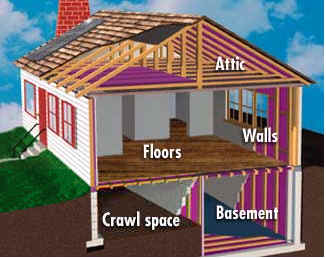
DOE Graphic
The exterior of your home is called the “envelope” or “shell.” The
envelope is made up of the outer walls, ceiling, windows, and floor. It
is common to find both old and new homes that have poorly performing
“envelopes” – that is, they have drafty air leaks and are poorly
insulated. An envelope that performs poorly leads to an uncomfortable
home and higher heating and cooling bills. This is especially true when
the weather outside is very cold or hot. Sealing air leaks and adding
insulation can increase your home’s overall comfort, as well as reduce
heating and cooling bills.
Adding insulation in the areas shown here may be the best way to improve
your home's energy efficiency
-
Use energy-efficient appliances (check the Energy Guide Labels for
refrigerators, freezers, water heaters, clothes washers, dishwashers
and air conditioners to buy the appliance that uses the least amount
of energy.)
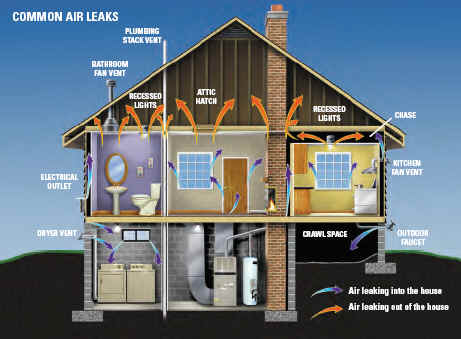
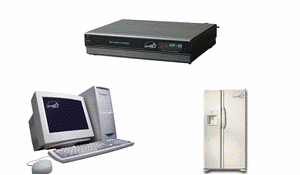

DOE Graphic
-
Washers and Dryers
-
Electric washers and dryers can consume as much as 25 percent of
the electricity used at home, including hot water for the wash.
-
As much as 90 percent of the energy consumed by washing machines
heats the water. Reducing water temperature reduces energy
consumption.
-
Few fabrics need to be washed in hot water these days. With
today's detergents, many lightly soiled clothes can come clean
even in cold water.
-
Cold-water washing saves energy.
-
Conventional washing machines use about 15 percent of the water
in homes that have them.
-
Each wash cycle uses 32 to 59 gallons, as much as two showers.
New-generation resource- efficient clothes washers save energy,
water and wastewater, and save you money in the long run.
-
Clothes Dryer-
-
Clean the dryer's lint filter after each use. That allows the
air to circulate efficiently. The harder it is for air to
circulate past your clothes, the longer the dryer must run.
-
Dry full loads, but don't overload your dryer. The clothes need
room to tumble.
-
If your dryer has a moisture sensor setting, use it. It will
shut off the dryer automatically when the clothes are dry and
typically cuts energy use by 10 percent to 15 percent. Dry heavy
and light fabrics separately. That way, all clothes in the load
will be dried at once.
-
Don't add wet items to a load that already is partly dry.
-
Try drying loads consecutively to take advantage of built-up
heat.
-
Try using a clothes line. It's natural, it's old-fashioned and
the energy is free. For small loads such as socks and underwear,
try a small indoor drying rack.
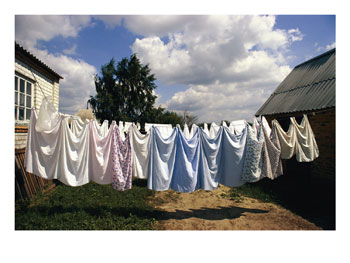
-
Clothes washer
-
Use cooler water temperature to wash clothes. Clothes washers
use energy to both clean clothes and heat water.
-
If you're in the market for a new washer, replace your old one
with an ENERGY STAR qualified model. ENERGY STAR qualified
clothes washers use 35-50% less water and 50% less energy per
load; that's real energy and money savings.
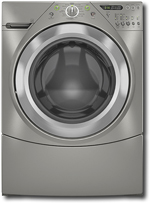
-
Get a furnace tune-up-40% of the energy you use in your home is for heat.
-
Set your water heater temperature at the "normal" setting (no higher than
120 degrees F). This can save up to 11% of your water heating costs. Second,
make a quick trip to the hardware store or home improvement center for a hot
water insulation kit to wrap your water heater and save on water heating
costs.
-
Drive less-plan your trips to be more efficient or walk or ride a bike.

1 round trip from NY to LA or Trans Atlantic round trip = 2,000 pounds of CO2
In a year air travel releases 600 million tons of carbon dioxide into the
atmosphere

Sir Mark Moody-Stuart
Driving gas-guzzling cars should become as unfashionable as wearing fur
and that the vogue for buying four-wheel drives, which consume far more
fuel than ordinary vehicles, is "totally illogical" says Sir Mark
Moody-Stuart, Chairman of the Committee of Managing Directors(CMD) of the
Royal Dutch/Shell Group of Companies and Chairman of The "Shell" Transport
and Trading Company, plc., in an interview in the U.K. newspaper the
Independant.
Keep Your Car in Shape
-
Fixing a car that is noticeably out of tune can improve gas mileage by
about 4%. Repairing a faulty oxygen sensor can improve fuel economy by much
more!
-
Replacing a clogged air filter can significantly improve gas mileage.
-
Keeping tires infl ated to the recommended pressure and using the
recommended grade of motor oil can improve fuel economy by up to 5%. The
manufacturer’s recommended tire pressure can be found on the tire
information placard and/or vehicle certification label located on the
vehicle door edge, doorpost, glove-box door, or inside the trunk lid.
Plan and Combine Trips
-
A warmed-up engine is more fuel effi cient than a cold one. Many short trips
taken from a cold start can use twice as much fuel as one multipurpose trip
covering the same distance when the engine is warmed up and effi cient.
Note: Letting your car idle to warm-up doesn’t help your fuel economy, it
actually uses more fuel and creates more pollution.
Drive More Efficiently
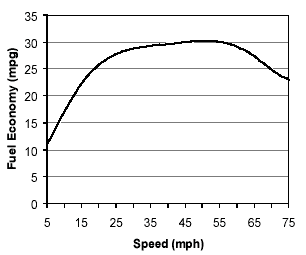
-
Aggressive driving (speeding and rapid acceleration and braking) can lower
your gas mileage by as much as 33% at highway speeds and 5% around town.
-
Observe the speed limit—each 5 miles per hour (mph) you drive over 60 mph
can reduce your fuel economy by 10%.
-
Avoid idling—idling gets 0 miles per gallon!
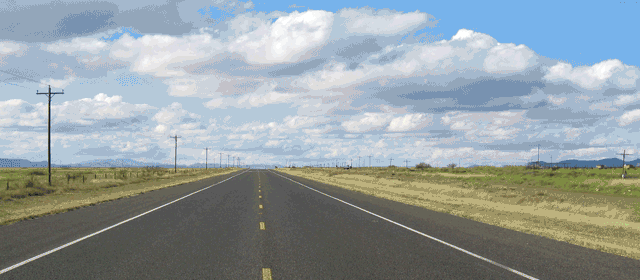
-
In The United States the use of
SUVS (Suburban Utility Vehicles) is the latest fad and passion. SUVS
on average release 5,600 pounds of CO2 into the atmosphere each
year, double the amount of the average car driven the same
distance.

-
Air travel has become commonplace
for vacationers, but not with out it's unseen costs to the
environment. A round trip flight from New York to Los Angeles
releases as much as one automobile does in an entire year. On a
yearly basis all air travel releases 600 million tons of carbon
dioxide into the atmosphere.
-
Think before you drive or fly.
 SAVE WATER-
SAVE WATER-
-
Install high-efficiency shower heads, that use about 2.2 gallons of
water per minute, and faucet aerators. Showers account for 32% of
home water use.
-
The normal faucet flow is three to five gallons of water per
minute (gpm).
-
Attaching a faucet aerator reduces the flow by 50 percent.
Though the flow is reduced, it will seem stronger because air is
mixed with the water as it leaves the tap.
-
Installing energy-efficient aerators on kitchen and bathroom
faucets will save hot water. It also will cut water use by as
much as 280 gallons a month for a typical family of four. That's
more than 3,300 gallons a year for one family. If only 10,000
four-member families install energy-efficient aerators, we'll
still save more than 33 million gallons a year.
-
Replace your standard 5-7 gallon-per-flush toilet with the new
water-saving models that use only 1.6 gallons of water per flush: a
cheaper and easier way to save is to install a "displacement
device"-put a plastic bottle filled with water in your toilet tank-
it can save thousands of gallons of water annually.
-
Wash laundry and dishes when machines are full
-
While brushing your teeth do not let the water run
-
Fix dripping faucets and other leaks. Don't leave the tap running
while you brush your teeth, shave or wash the dishes-you will save
thousands of gallons of water annually.
 CUT
GARBAGE- CUT
GARBAGE-
-
Use cloth napkins and dish towels instead of paper.
-
Buy food and other products wrapped in the least amount of packaging
possible.
-
Choose reusable dishes and cups and metal silverware in place of
paper, plastic or styrofoam.
-
Use cloth diapers.
 VOTE-
Support candidates who pledge to protect the
environment. Once a candidate is elected, monitor his or her voting
record; keep in regular contact through testimony, letters, e-mail and
telephone. Don't ever believe that your vote won't make a
difference. John F. Kennedy won the presidency in 1960 by the tiny
fraction of a single vote per voting precinct. George Bush beat Al
Gore by less than 700 votes in Florida to become President. VOTE-
Support candidates who pledge to protect the
environment. Once a candidate is elected, monitor his or her voting
record; keep in regular contact through testimony, letters, e-mail and
telephone. Don't ever believe that your vote won't make a
difference. John F. Kennedy won the presidency in 1960 by the tiny
fraction of a single vote per voting precinct. George Bush beat Al
Gore by less than 700 votes in Florida to become President.
LEARN MORE-
Buy a book on the environment or endangered species. Become an advocate
and tell your family and friends about the crisis. Do it now. Do it with a
sense of urgency.

|

















